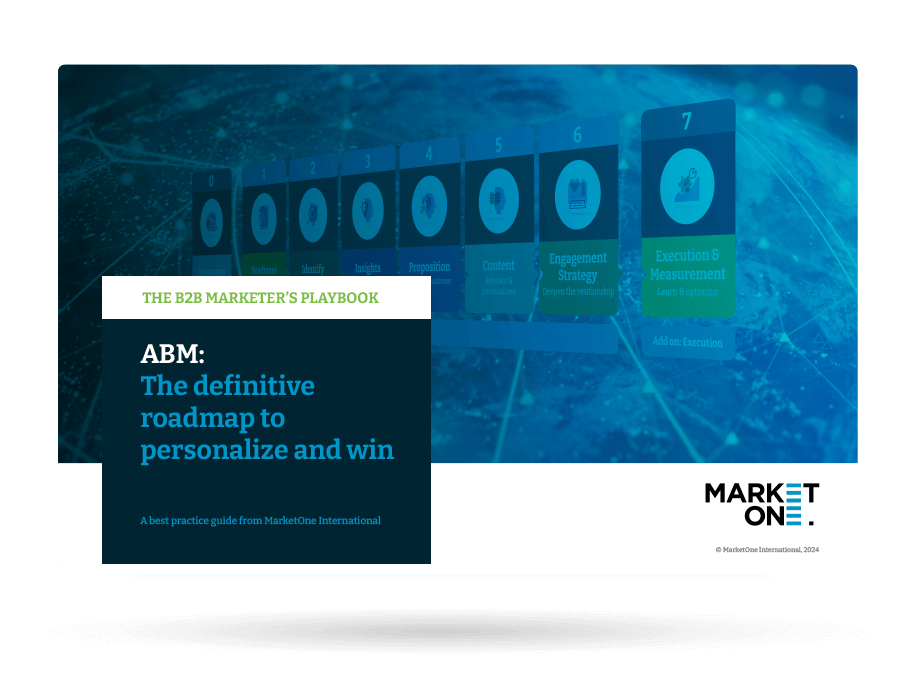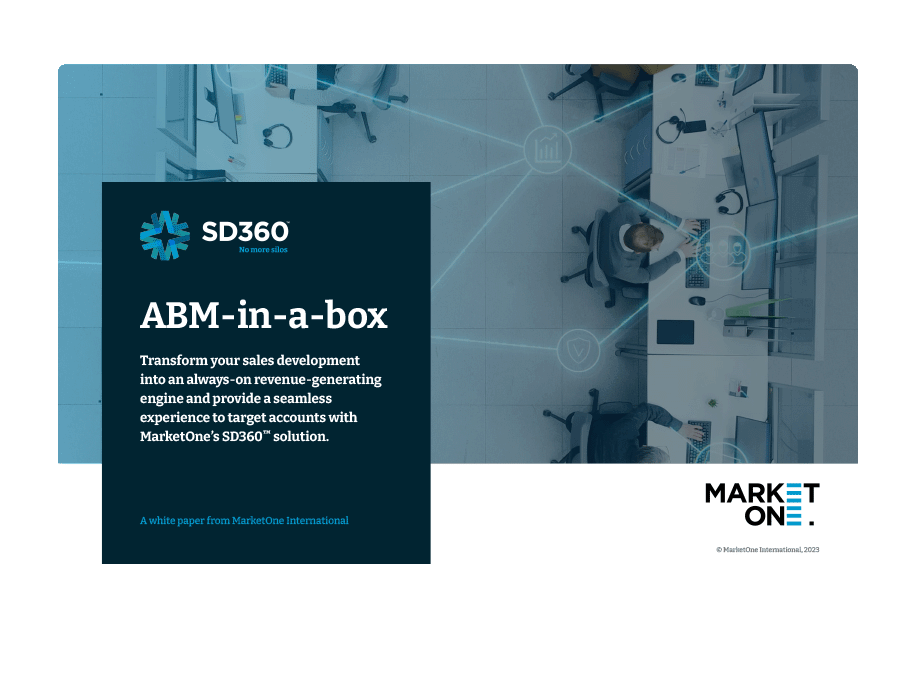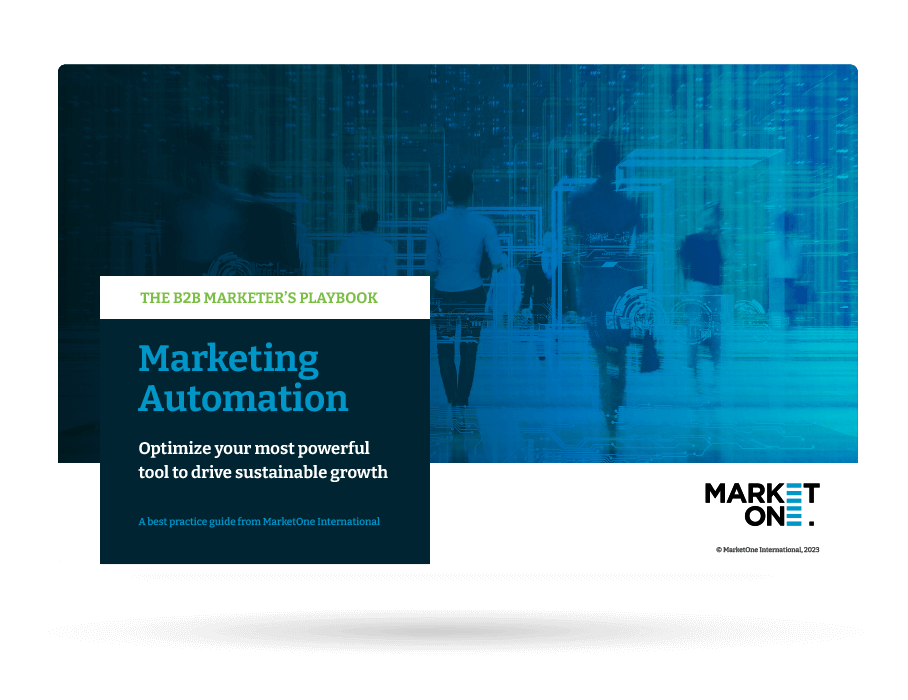New year, new opportunities… but which ones will really move the dial?
As with many industries, 2023 was a rollercoaster for B2B Sales and Marketing. We emerged fully from COVID with a bang, but swiftly transitioned into a landscape of budget cuts and belt-tightening. We continued to adapt to the new (mostly) work from home culture with its benefits and challenges, and Artificial Intelligence, long promised, hit the mainstream as a useful, if divisive tool, promising instant gratification, but often delivering mediocre results. Overall, it felt like there was growth in ‘window shopping’ from Business-to-Business organizations – more engagement with content, more conversations, helped by ever-evolving technology – but it was harder to get deals over the line.
2024 certainly feels more positive from an economic point of view, although it’s too early to know if this optimism will translate into more new business. But what should sales and marketing teams be focusing on to help build that pipeline back up and get the ‘deal train’ running again? Here are 5 things that just might make a difference:
1. Go big on ABM (yes, still, and always!) – and potentially expand to ABX
I know – it’s been around for years, so how can it be still considered current in 2024? The thing about ABM is that it’s a bit like climate change. Everyone knows it’s a good idea, everyone’s talking about it, planning for it, having meetings about meetings (about more meetings) to take action, but many businesses still aren’t actually running Account Based Marketing campaigns, or are literally only dipping their toes in the water. Why? Because, like with the solutions to climate change, putting ABM in place involves a fundamental shift in the way you do business. Siloed teams need to work closely together, different KPIs must be defined and reported on, expectations reset. To be successful at ABM, you need to go ‘all in’ or fall victim to the old adage – fail to plan – plan to fail – and this involves both investment and a leap of faith.
So why should 2024 be any different than previous years when it comes to adopting an ABM approach? For the very reason I mentioned above: it’s been around for a while, meaning that there’s a wealth of knowledge and experience sales and marketing teams can call on to make the transition smoother, along with an ever-growing number of case studies that all say the same thing: Account Based Marketing works.
If you’re still struggling to get your business ABM ready, check out our ABM Best Practice Guide for useful tips and tricks, including our 7-step ABM Accelerator. And make sure to take our ABM readiness quiz to identify gaps in your current infrastructure and download some useful tools to help you fill them.
Footnote: don’t just think ABM, think ABX. Rather than only covering demand generation and sales, focus on the whole customer lifecycle and experience, with an even greater emphasis on data, insights and additional channels. Watch out for our separate blog on this, coming soon!
2. Go SD360™ to have more, better, sales conversations
Even before the pandemic, it was difficult to reach people on the phone, and now, with a large percentage of employees working from home some, most or all of the time, landlines have pretty much ceased to work, meaning cell phones – often used for personal and business purposes – are the only way to get in touch with prospects, who can be less than happy to be called. In addition, the explosion of digital communications, especially email, as a replacement for face-to-face meetings and calling, combined with confusing, siloed messaging, has seriously handicapped BDRs in their efforts to connect with prospects and have that all important first conversation.
That conversation is a core part of MarketOne’s business expertise, so we looked at how we might go about not only improving the chances of it taking place but at the same time making sure it was with the right person, relevant, and not clashing with other messages from competing campaigns. The solution we came up with is called SD360™.
SD360™ involves surrounding prospects with unified digital and human communications (e.g. paid social, sales emails, social outreach, calling), letting them choose which to engage with, and helping them access the information they need to have an informed discussion with a BDR. Connect rates improve, conversations are more relevant and conversion rates increase.
You can find out more about SD360™ and download our best practice guide here.
3. Go multi-channel with your marketing automation
If I say marketing automation to you, what immediately comes to mind? For many B2B executives it will be email – and only email – and this would have been true a few years ago. Today, however, Marketing Automation Platforms (MAPs) are far more than simple email campaign tools, with the ability to sit at the center of your martech stack, orchestrating next best action across all key channels including media, social, mobile and events. What’s more, with the advent of AI, decision trees are becoming more complex, learning is quicker, results can be boosted almost overnight.
How you use your marketing automation will depend on a number of factors, that combine to define your marketing automation maturity. If you’re looking into how to get more out of your MAP and move up that maturity scale, our Automation best practice guide can help. If you’re not sure where you are on the scale today, why not get in contact to book an assessment with our experts?
4. Go further, faster with DAIta and AInalytics
If there’s one area where AI can make a huge and immediate difference for B2B sales and marketing, it’s data and analytics. Successful marketing starts with the data and ends with the analytics (more data) showing how it performed, and the processes for compiling this information are complex and time-consuming.
Enter Artificial Intelligence. If you ask the right questions, AI can revolutionize your sales and marketing approach from end to end in areas including data segmentation, enrichment and cleaning, sentiment analysis, setting up and executing tests, attribution reporting, and the creation of detailed, easy to use dashboards. The potential here is massive: more information, faster, with fewer resources, driving improved results – but you need to put in the work up front to set everything up correctly or – to use another old adage – you will end up with ‘garbage in, garbage out’.
Would you like to learn more about how AI could transform your data and analytics? Our experts would be delighted to help you put together an actionable plan – simply contact us to set up a discovery call.
5. Go in a new direction: test out your MAP’s AI capabilities
All of a sudden, everyone’s looking for a piece of the AI ‘action’, and not surprisingly this includes the main marketing automation platforms. All of them have started to leverage AI in limited ways, but have announced more aggressive plans to use it across the board to personalize and optimize their marketing automation offerings:
- Eloqua went early with analysis of subject line performance, email fatigue and optimal send time, but are now expanding to offer advanced lead scoring, real-time account insights and sophisticated campaign design
- Marketo have announced Sensei AI, a generative AI ‘co-pilot’ designed to help plan and create content and workflows as well as offering predictive audience insights to improve targeting
- Salesforce Marketing Cloud are using Einstein AI to support everything from segment creation to content creation and journey orchestration and optimization
- Hubspot are working to a roadmap announced in 2023, and already provide an AI-driven ‘content assistant’ as well as image generation, with predictive AI features for data and analytics in the works
This is a really exciting development for marketing automation, and these features have the potential to improve all areas of the campaign process, save time and increase ROI. Our experts are already testing them out across the platforms as well as using generative AI in other ways to drive productivity and if you are looking to do the same, we would be delighted to help you – just get in contact so we can discuss your specific challenges.
The year is still young, and there’s plenty of time for some new ‘magic bullets’ to appear for B2B sales and marketing executives, but that’s still in the crystal ball. Focusing on some or all of the 5 areas suggested above has at least 2 huge advantages: they are already achievable today, and they have already been proven to deliver.


